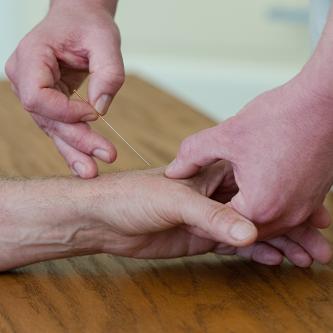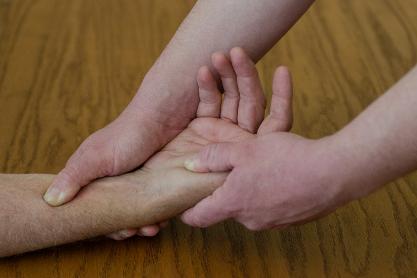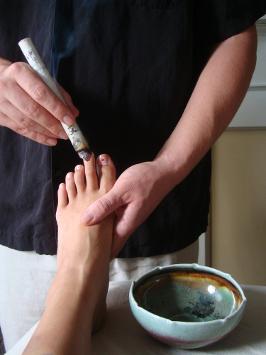acupuncture, massage, and medical qigong
***Acupuncture is not currently offered. the following is for informational purposes only***
what is acupuncture?
Acupuncture is often shrouded in mystery or otherwise misunderstood. I would like to take a moment to shed some light on this subject, as well as place it within the larger context of treatment. Acupuncture is the insertion of thin filiform needles into the body at locations referred to as acupuncture points. Really, any place on the body can be considered an acupuncture point, but there are over 350 defined and thoroughly described locations that have, over the years, been shown to be consistently effective for treating a wide range of illnesses (see the bottom of this page for a list of conditions for which the World Health Organization has found acupuncture to be helpful). It is equally true to say that those points have been found to be more affected by illness. It is worth spending some time on this concept, as it may elucidate some overarching concepts within the Chinese medicine paradigm.

Chinese medicine anatomy and physiology
In this system, the body is viewed as an integrated whole, meaning that no part of the body operates independently from any other part. For example, the state of the digestion affects the health of the muscles, mental state, memory, emotions, and energy level. This is just one example of this type of interconnectedness. Over thousands of years, physicians in China noticed and documented in great detail the functional relationships between different bodily tissues (and emotions, thought processes, and psychological states). This eventually led to the development of meridian theory, the basic concept of which is that certain organs, muscles, bones, blood vessels, ligaments, tendons, fascial layers (and so on), and the spaces between these structures tend to have closer relationships to one another than with those tissues in other parts of the body.
The meridians are not any one of these tissues, nor are they separate from them. Rather they can be considered to be the entirety of structures and tissues along a certain pathway, including the spaces between them that, in essence, connect them all. That which animates all of these structures and drives the physiological functions of the body is referred to as qi. The term, "qi" can have a variety of meanings depending upon the context. In this case, we can think of it as the motive force of the body, mind, and spirit, that thing which unites everything, and the manipulation of which can affect every aspect of a person. It is within the aforementioned spaces that qi is said to flow, diffusing into and permeating every part of the body.
Illness, Injuries, and the Meridians
An illness or injury in one area of a meridian will cause changes in the flow or quality of qi, resulting in observable changes in other parts of that meridian (and possibly other meridians as well). One such result will often be that certain acupuncture points will become tender or show other pathological changes, such as weakness, swelling, redness, or pallor. Treatment of these areas, because of their connection to the original area of illness, can produce the changes needed to restore the body's ability to heal the injured or diseased area. Rather than fixing the body as a mechanic fixes a car, Chinese medicine seeks to restore the body's ability to heal itself by restoring the proper flow of qi throughout the body, particularly in the areas affected by an illness and/or related to the area of illness. This is why it is possible to use physical manipulations of the body address a wide range of internal disharmonies, including disorders of the digestion, emotions, nervous system, immune system, and more .

Acupuncture points are generally located along meridians (although there are so-called extra points that are not on any particular meridian), and each one is said to treat a number of illnesses and injuries, depending upon physical location and the meridian upon which it is situated. They are basically places on the body at which it is relatively easy to affect the qi and therefore restore balance and health. Points, perhaps more accurately called holes, are generally located in clefts or spaces between structures. Acupuncture needles are used affect the qi that is flowing in these spaces.
With this understanding, we can see that number of techniques may be applied to the body in an effort to affect qi and restore health. It is important to remember that acupuncture is simply a tool that can be used toward this goal, as are massage, cupping, guasha, patting, traction, application of topical herbs, oils, or ointments, and so on. These are all included under the umbrella of physical medicine, which I define as techniques applied directly to the body as a part of treatment.
A medicine of relationships
One of the hallmarks of Chinese medicine is its ability to view almost anything as a possible cause of illness or health. Beyond the aforementioned relationships between structures and tissues in the body, this kind of interconnectedness is seen as extending to the entire universe. The changing of the seasons, our relationships, routines, and beliefs, sensory input, the weather, and practically everything else have some level of influence on our bodies and minds. If taking a less human-centered view, we can say that the health of each individual is part of a web that includes every other individual and, indeed, everything else in the universe. Now, some things obviously have a stronger influence over our health than others. Our diet, physical environment, quality and quantity of exercise, stress level, and physical constitution certainly play a larger role than a random interaction taking place between two people we don't know on the other side of the world. That being said, the more factors and relationships we can be aware of at once, the more effective we can be in creating an overall environment that is conducive to the restoration of health.
This is why it is so important for practitioners to have a strong foundation in and continuing practice of internal cultivation (i.e. daoyin, qigong, meditation). These practices assist one in developing very subtle awareness of the dynamic systems of the body, which leads to clinical insight and the ability to more effectively and intentionally control the patient's (and one's own) qi during the treatment. The practice of internal styles of martial arts (i.e. taiji, xingyi, bagua, liuhebafa) alsoadds to the level of skill through the development of a deep form of strength, understanding of body mechanics, the ability to establish and maintain a connection with the body of the patient, and experience healing the injuries that inevitably arise during the learning and practice of such arts.

treatment modalities
Some illnesses and injuries are simple and easy to correct. In these cases, application of just a few modalities may be enough to eliminate the problem. In more complex cases, such as degenerative diseases and chronic illness, a practitioner will work over time to align as many factors and use as many modalities as needed to bring about health. These may include:
*physical medicine techniques, as described above;
*moxibustion
*internal herbal medicine;
*medical qigong;
*prescription of specific exercises designed to influence one or more aspects of the body or mind;
*dietary therapy;
*discussion of changes in routine or timing of certain activities;
*meditation, and more.
Basically, a skilled practitioner of Chinese medicine will utilize anything and everything at his or her disposal to help a patient attain optimal health, whatever that may be for him or her.

|
WHO_list_conditions_treatable_with_acupuncture.pdf Size : 193.116 Kb Type : pdf |